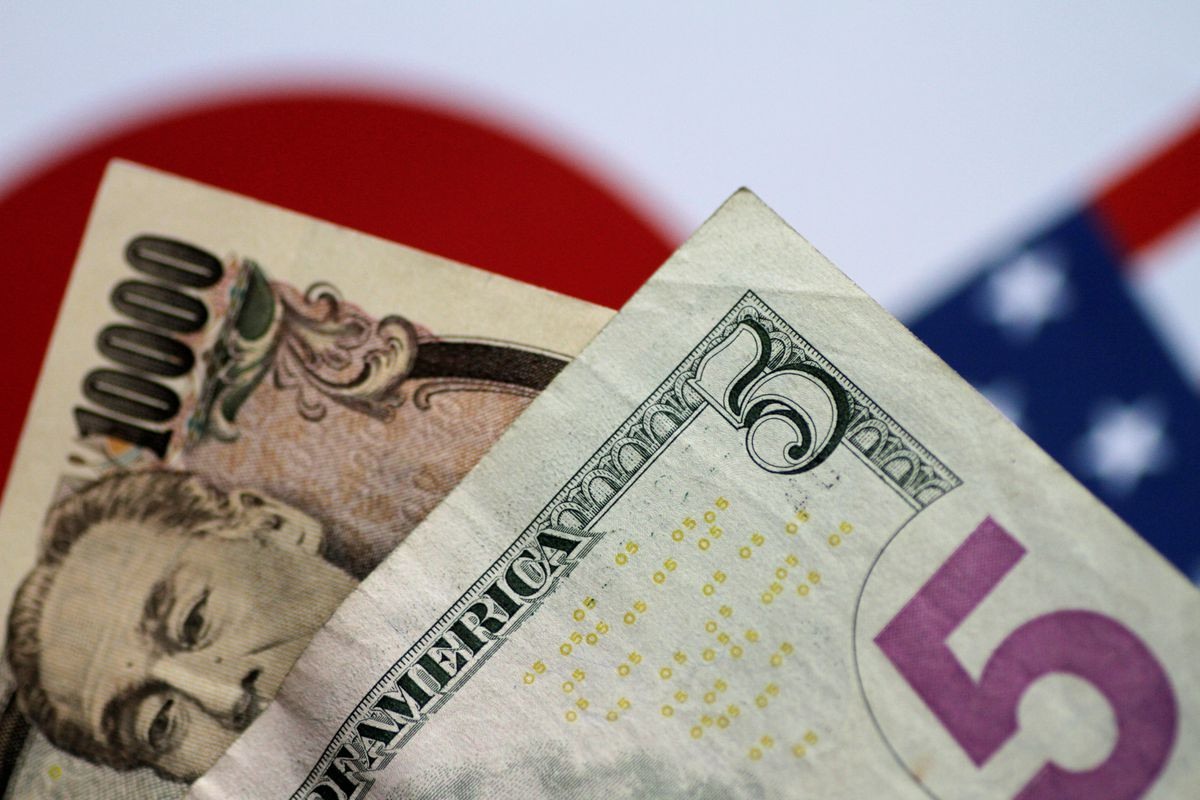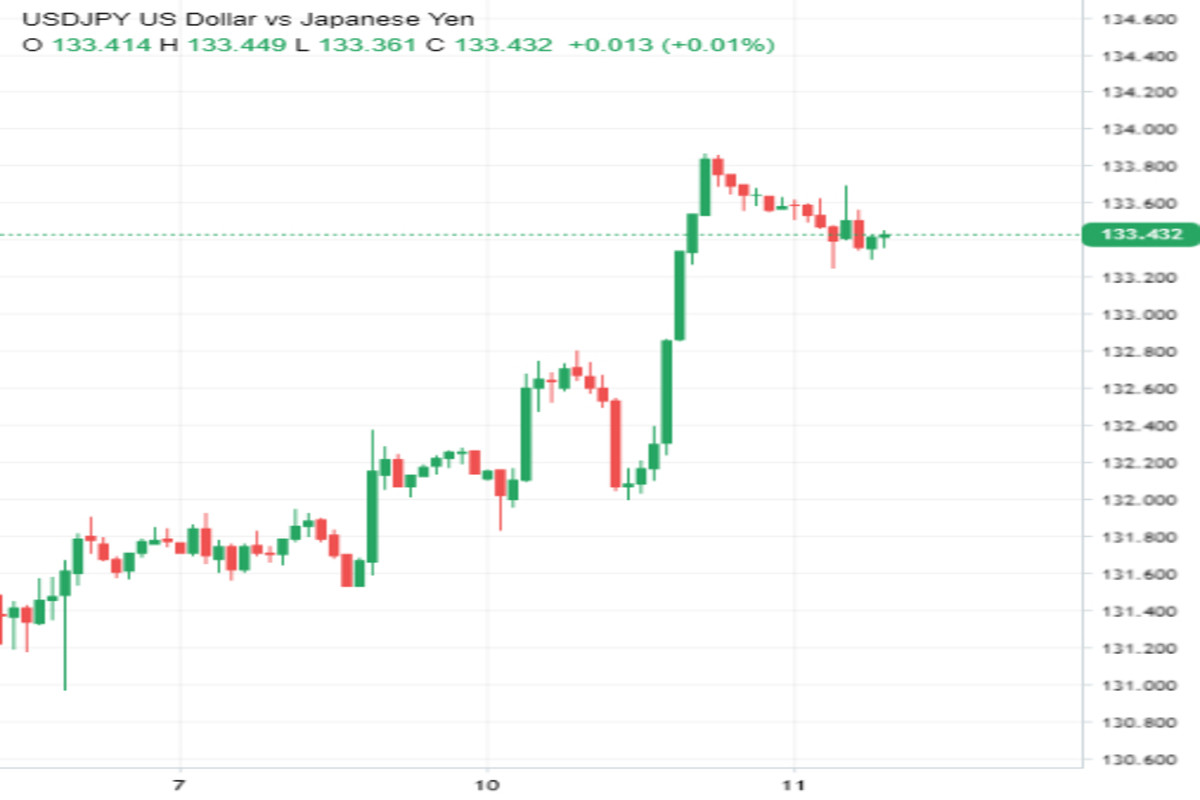
USD/JPY has seriously advanced recently. Yesterday, the quote not only continued its ascent, but also noticeably accelerated its upward movement. What sent the pair skyrocketing and what are its further prospects?
Ueda fails to help yen for now
At the beginning of the week, USD/JPY bulls maintained their advantage, significantly intensifying their efforts. On Monday, the asset soared by more than 1.1%, showing the best performance among all US dollar pairs.
The quote's intraday high was 133.87, the highest level since mid-March.

One of the key growth drivers for the US dollar was yesterday's inauguration speech by the new Governor of the Bank of Japan, Kazuo Ueda. On April 10th, he held his first press conference since taking office.
Many traders expected to hear hawkish signals from Ueda that would indicate an imminent monetary policy U-turn for the BOJ. However, he did not meet their expectations.
As before, the head of the Japanese central bank spoke in favor of maintaining the current monetary policy course, stating that there are no compelling reasons for switching to a hawkish course yet.
Kazuo Ueda noted that the country was in a state of disinflation, and that its economic prospects remained very uncertain.
The dovish stance of the BOJ's governor dashed investors' hopes for a reduction in monetary policy divergence between Japan and the US, resulting in the yen's nosedive against the US dollar.
However, most currency strategists consider the latest JPY sell-off to be an overreaction and expect market speculation about the BOJ's U-turn to resume as soon as traders' emotions subside.
According to experts, in the near future, investors will continue to bet on the possible change of monetary policy in Japan. This topic will be actively discussed in the market until the BOJ's policy meeting at the end of April.
"Ueda's first press conference spurred a weaker yen probably because some market players who expected him to provide more details about yield-curve control tweak were disappointed. Basically, Ueda indicated maintenance of the current monetary policy framework, including the negative interest rate. However, this will unlikely be a factor to successively sell the yen and investors will probably await discussions at the April 27-28 policy meeting," Teppei Ino, economist at MUFG Bank said.
His colleague from Nomura, Hideyuki Ishiguro, also sees potential for strengthening the market's hawkish expectations over the next 2 weeks:
"Any preliminary hint of changes to the YCC would have spurred speculative bets against the BOJ's current policy. I think Ueda understood this perfectly and therefore chose to be extremely cautious. In essence, he gave no clear comments on this matter during his speech yesterday, and this suggests the possibility of seeing changes in April."
If the experts are right and the market soon focuses not on the dovish statement by the head of the Bank of Japan but on expectations for adjusting the yield curve control policy, this will significantly weaken the USD/JPY pair in the medium term.
In the most pessimistic forecasts, against this background, the dollar may fall against the yen to its recent 2-month lows.
Market believes in Fed for now
Another positive factor for USD/JPY yesterday was the strengthening of the market's hawkish expectations regarding the Fed's further monetary policy.
Since mid-March, when the US was engulfed in panic during a large-scale banking crisis, investors sharply lowered their interest rate forecasts in the US.
Market speculation emerged that the Fed could pause the current tightening cycle in May, with an inevitable rate cut by the end of the year.
However, now that the situation in the financial sector seems to have stabilized, traders no longer have a strong reason not to believe in the Fed's determination, especially since the current economic picture also favors further rate hikes.
Last Friday investors received another batch of positive US macroeconomic data. The monthly employment report showed that the US labor market is still robust.
Non-farm payrolls in the United States rose by 236,000 jobs in March, pushing the unemployment rate down to 3.5% from February's 3.6%.
Traders are confident that a strong labor market will allow the Federal Reserve to tighten monetary policy again next month. They now estimate the probability of a 25bp rate hike in May at more than 80%.
US Treasury yields went up after market forecasts were adjusted upward, which in turn pushed USD/JPY up strongly.
Analysts at UOB believe that the asset is now in overbought territory, and that the dollar is unlikely to move much further in the short term. According to their forecasts, USD will move into a consolidation phase today and will trade between 132.60 and 133.90.
However, most experts the pair's volatility to increase as soon as tomorrow. The trigger for the quote will be the US inflation report for March.
If the data turns out to be stronger, indicating that American prices remain under pressure, it might reinforce hawkish market expectations and send USD/JPY to new highs.
If the data is weaker, and there are more signs of disinflation in the US, it could put a lot of pressure on the US dollar. In that case, the greenback is likely to fall across the board, as well against the Japanese yen.
Economists currently expect the annual inflation rate to fall to 5.2% from 6%. At the same time, they forecast the core CPI, which does not include food and energy prices, to rise to 5.6% from 5.5%.
The fact that inflation remains far from the Fed's 2% target should likely convince investors about the Fed's hawkish plans for May.
However, market participants will not be able to ignore the emerging downward inflation trend. Analysts believe an overly sharp inflation slowdown could affect the market's long-term expectations for US interest rates.
Some traders now believe that the interest rate range could be around 4.40% by December, which would imply at least 2 rounds of 25 bps rate cuts from their projected May peak.
If this view becomes more common after the March CPI data release, the dollar could suffer a massive sell-off. This will particularly benefit the Japanese yen.





















